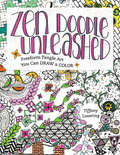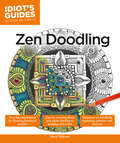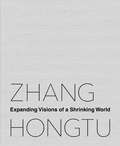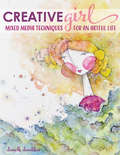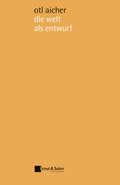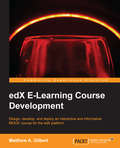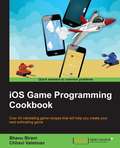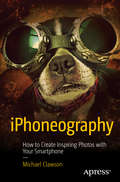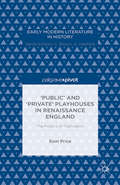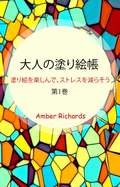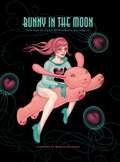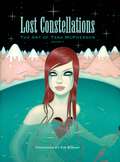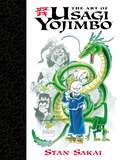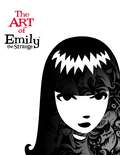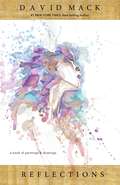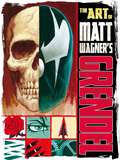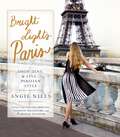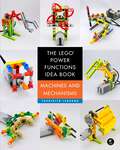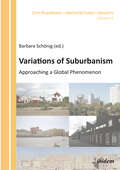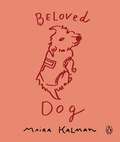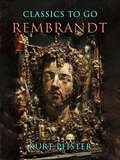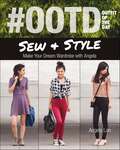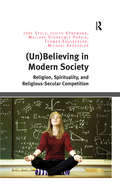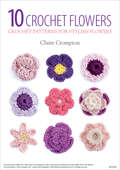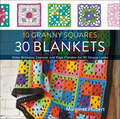- Table View
- List View
Zen Doodle Unleashed: Freeform Tangle Art You Can Draw and Color
by Tiffany LoveringIf you're looking for an easy, relaxing outlet for your creativity, you've come to the right place. Zen Doodle Unleashed features the same fun, free and soothing style that has made Tiffany Lovering a YouTube favorite! Express yourself with freeform tangles that are not confined within an outer boundary or "string." Instead, you create abstract patterns that flow and build off each other to fill the whole page. It's almost magical the way simple patterns add up to complex and beautiful results. Plus you'll learn a variety of shading and coloring options to up the wow-factor even more!Inside you'll find:4 simple steps you need to build an original freeform tangle from scratch50 original patterns broken down into easy-to-follow steps including basic, intermediate, advanced, organic and gridline patternsCool coloring techniques with permanent markers, colored pencils, oil pastels and watercolorA cut-out reference booklet of 101 patterns by TiffanySimple lettering techniques, different pen strokes for variety and lots more expert advice!From quick-start basics to inspiration galore, Zen Doodle Unleashed is a liberating guide for beginners and more experienced artists. It's never been easier to get started. But fair warning--once you start, you may find it hard to stop!
Zen Doodling (Idiot's Guides)
by David WilliamsDoodling isn't necessarily a mindless pursuit. There's hidden discipline, order, and joy behind artful scribbles. Idiot's Guides: Zen Doodling gives readers beautiful, full-color instruction and all they need to start using ordered, repeated "tangle" designs that are great creative expressions and works of art unto themselves. The book includes step-by-step instructions for drawing more than 20 doodle forms and patterns.
Zhang Hongtu: Expanding Visions of a Shrinking World
by Jerome Silbergeld Luchia Meihua LeeIn this book, leading art experts, art historians, and critics review the life, career, and artistic development of New York based Chinese artist Zhang Hongtu. A pioneer in contemporary Chinese art, Zhang created the first example of "China Pop" art, and his oeuvre is as diverse, intellectually complex, and engaging as it is entertaining. From painting and sculpture to computer generated works and multimedia projects, Zhang's art is equally rich in terms of China's history and its current events, containing profound reflections on China's oldest cultural habits and contemporary preoccupations. He provides a model of cross-cultural interaction designed to make Asian and Western audiences look more closely at each other and at themselves to recognize the beliefs they hold and the unexamined values they adhere to. From his early work in China during the Cultural Revolution to his decades as an artist in New York, Zhang reflects the complex attitudes of a scholar-artist toward modernity, as well as toward Asian and Western societies and himself. Placing Zhang in the context of his cultural milieu both in China and in the Chinese immigrant artist community in America, this volume's contributors examine his adaptations of classic art to reflect a contemporary sensibility, his relation to Cubism and Social Realism, his collaboration with the celebrated fashion designer Vivienne Tam, and his visual critique of China's current environmental crisis. Zhang's work will be on display at the Queens Museum in New York City from October 17, 2015 to March 6, 2016. Contributors: Julia F. Andrews, Alexandra Chang, Tom Finkelpearl, Michael Fitzgerald, Wu Hung, Luchia Meihua Lee, Morgan Perkins, Kui Yi Shen, Jerome Silbergeld, Eugenie Tsai, Thuy Linh Nguyen Tu, Lilly Wei Co-published by the Queens Museum and Duke University Press.
creativeGIRL: Mixed Media Techniques for an Artful Life
by Danielle DonaldsonFind your artistic creativity with delicate doodles, big colors and lavish layers! CreativeGIRL features art projects that teach you how to draw and paint your story using pencils, watercolor paints and simple mixed-media supplies. Danielle Donaldson shows you how to draw the pretty pictures from your imagination, infuse your art with delightful color combinations and work through creative frustration with simple fixes. You'll learn how to paint with watercolor, tell visual stories with and without words and add depth with layers using mixed-media techniques and little details--all while finding inspiration and gaining confidence in your own artistic style. Draw, paint, layer and create! More than 30 techniques and projects including drawing, painting and adding layers for artists and aspiring artists of all levels. Learn how do draw and paint figures such as creativeGIRL, busyGIRL and tutuGIRL. Then create your own girl to channel your story. Find even more inspiration in a gallery filled with extraLOVE from the artist.
die welt als entwurf: schriften zum design
by Otl AicherOtl Aicher (1922–1991) war einer der herausragenden Vertreter des modernen Designs, er war Mitbegründer der legendären Hochschule für Gestaltung Ulm (HfG). Der heute geläufige Begriff der visuellen Kommunikation ist auf ihn zurückzuführen. Was er seit den 1950er Jahren geschaffen hat, erinnert sei z. B. an die Piktogramme für die Olympischen Sommerspiele München 1972, gehört zu den ganz großen Leistungen der visuellen Kultur unserer Zeit.Die hier versammelten Texte sind Erkundungen einer „Welt als Entwurf“. Sie gehören substantiell zu seiner Arbeit. In der Bewegung durch die Geschichte von Denken und Gestalten, Bauen und Konstruieren versichert er sich der Möglichkeiten, die Existenz menschlich einzurichten. Nach wie vor geht es um die Frage, unter welchen Voraussetzungen Zivilisationskultur herstellbar ist. Diese Voraussetzungen müssen erstritten werden gegen scheinbare Sachzwänge und geistige Ersatzangebote.Otl Aicher streitet gern. So enthält dieser Band neben Berichten aus der Praxis und historischen Exkursen zu Design und Architektur auch polemische Einlassungen zu kultur– politischen Themen. Mit produktivem Eigen-Sinn streitet Aicher vor allem für die Erneuerung der Moderne, die sich weitgehend in ästhetischen Visionen erschöpft habe. Noch immer sei der „Kultursonntag“ wichtiger als der Arbeitsalltag.Wolfgang Jean Stock
edX E-Learning Course Development
by Matthew A. GilbertIf you are an educator creating a course for edX or a corporate trainer using Open edX for large-scale learning and development initiatives, then edX E-Learning Course Development is the ideal book for you.
iOS Game Programming Cookbook
by Bhanu Birani Chhavi VaishnavThis book is for developers who are willing to explore iOS game programming in depth. Good knowledge level and understanding of iOS game development will be an added advantage. You should already have a working installation of Xcode and Sprite kit.
iPhoneography
by Michael ClawsonThe iPhone and related touch devices have revolutionized personal communication, networking, mobile productivity, and so much more. One of the iPhone's most significant contributions to modern culture has been its impact on photography. It's the camera that's with us all the time, and its ready availability and growing technical capability mean we're snapping more high-quality images and video than ever before. Beyond simply documenting the details of our lives, iPhoneography and touch devices are now shaping a new artistic movement that's connected to a more real sense of touch and interaction that produces art in a very real and natural way. Creating on the iPhone and touch devices is an emotional, tactile, artistic experience that's very different from older methods of shooting and editing digital images. With INSPIRING TOUCH: HOW IPHONEOGRAPHY IS CHANGING THE WAY WE CREATE, you will explore these new techniques, applications, and attitudes and learn to create your own creative images.
‘Public’ and ‘Private’ Playhouses in Renaissance England: The Politics of Publication (Early Modern Literature in History)
by Eoin PriceAt the start of the seventeenth century a distinction emerged between 'public', outdoor, amphitheatre playhouses and 'private', indoor, hall venues. This book is the first sustained attempt to ask: why? Theatre historians have long acknowledged these terms, but have failed to attest to their variety and complexity. Assessing a range of evidence, from the start of the Elizabethan period to the beginning of the Restoration, the book overturns received scholarly wisdom to reach new insights into the politics of theatre culture and playbook publication. Standard accounts of the 'public' and 'private' theatres have either ignored the terms, or offered insubstantial explanations for their use. This book opens up the rich range of meanings made available by these vitally important terms and offers a fresh perspective on the way dramatists, theatre owners, booksellers, and legislators, conceived the playhouses of Renaissance London.
大人の塗り絵帳
by Amber Richards Saori Kagami電子版の塗り絵帳をお買い求めいただきまして、ありがとうございます。塗り絵の一時をお楽しみください。この電子書籍の最後にリンクとパスワードが付いており、本書のPDF版をダウンロードして印刷できるようになっています。この情報はご購入者様だけの特典なので、他の方と共有しないで下さい。ご理解頂けましたら幸いです。 準備が整ったら、この電子書籍のページをスクロールし、50種類のデザインからお好きなものをお選びください。50枚のペーパーバックより、電子版でスクロールして全体を見た方が楽だと思います。デザインはシンプルや複雑な物まで、様々です。は皆様のお好みのスタイルにぴったりのデザインをお選び頂けるよう、種類を豊富にしました。また、皆様が私のようなタイプだったら、ムードによって塗りたいデザインが変わる場合もあるでしょう。 大人向けの塗り絵は今非常に人気が出ています。子供の頃の塗り絵の楽しさを、成長した今、また思い出してみましょう。 塗り絵をするとリラックスできると結論付けている研究があります。また、一番効果的なのは寝る前だそうです。様々な思いが頭に浮かんできてなかなか眠りにつけない不眠症の方は、その状態を軽減できます。塗り絵をすることで電子機器から解放され、ストレスが減るからです。 他にもご提案があります。クレヨンは塗りやすいですが、それ以外の媒体で塗り絵をしてみましょう。色鉛筆、マーカー、油絵、ペンキでもぜひ試してみてださい。陰影を付けて、立体的にしてみてもよいでしょう。プリンターで印刷する時は、目が粗い紙ではなく�
Bunny in the Moon: The Art of Tara McPherson vol. 3
by Tara McPhersonGods and devils. Flesh and spirit. Sacred and profane. One of the leading lights of Pop Surrealism, Tara McPherson has traveled the world with her work, gaining new inspirations. Bunny in the Moonfeatures compelling new works and sculpture informed by mythology and folklore. The resulting imagery combines the primal power at the core of ancient culture with McPherson's contemporary explorations of love, loss, strength, vulnerability, and female empowerment.* Foreword by filmmaker Morgan Spurlock (Supersize Me).* Tara's work has been featured in Vanity Fair, The New York Times, and Juxtapoz!
Lost Constellations: The Art of Tara McPherson Vol. 2
by Tara McPhersonLoss, love, and loneliness. Altered forms and transfigured ideas. Power and vulnerability. Parallel universes of the heart and mind. Space and time. In a few brief years, the stunning visual oeuvre of Tara McPherson has grown and evolved at thrilling speed. Expanding beyond the limits of rock poster art into the worlds of commercial illustration and fine art, her paintings, drawings, toys, sculptures, and installations have pushed her influence and authority across the breadth of creative expression and helped redefine the boundaries of pop surrealism. Lost Constellations: The Art of Tara McPherson Volume 2 is the compelling road map to the artist's most recent and ambitious journeys in paint, pencil, and sculpture.
Art of Usagi Yojimbo
by Stan SakaiIn the tradition of the celebrated collections The Art of Sin Cityand The Art of Hellboy, Dark Horse is proud to showcase the work of multi award-winning creator Stan Sakai in The Art of Usagi Yojimbo. The sold-out hardcover edition, timed to coincide with the twentieth anniversary of the creation of Sakai's signature character, Usagi Yojimbo, was met with an overwhelming response from thousands of fans around the world. This edition features scores of never-before-seen pieces, a long out-of-print twelve-page primer illustrating how Stan creates each of his Usagi stories, forty-eight full-color pages of Stan's beautiful painted artwork, and more. Additionally, some of the biggest names in comics pay tribute to their favorite rabbit ronin in a fantastic gallery section, with pinups by Frank Miller, Geof Darrow, Jeff Smith, Sergio Aragonés, and Matt Wagner, among others!
The Art of Emily the Strange
by Rob RegerIn her fifteen-plus years in existence, oddballs, outcasts, and art freaks the world over have grown to know and love a strange young girl named Emily. With roots in the punk-rock art scene of Santa Cruz skate culture and an early appeal to European trend spotters, the iconic image of Emily and her philosophy of devout individualism have become deeply rooted in global culture. The Art of Emily Volume One is the first-ever collection of images showing the wide and inspired range of artistic styles and mediums that have been used to create the world of Emily the Strange. From skateboard stickers to custom rock-and-roll album art, large-scale psychedelic paintings, and insanely intricate Mongolian paper cutting, the fantastic and artful imaginings of Rob Reger, Buzz Parker, and a staggeringly talented array of collaborators will give insight and inspiration to any Emily fan.
Reflections: A Book of Paintings & Drawings
by David MackDavid Mack is the New York Times best-selling author and artist of the Kabuki graphic novels, the writer and artist of Daredevil from Marvel Comics, and the author and artist of his children's book The Shy Creatures from MacMillan. Mack most recently created the art & concept for the credit sequence on the #1 hit motion-picture, Captain America: The Winter Soldier. Reflections presents a selection of David Mack's art, including sketches, finished paintings, sculptures, and other various forms, giving the reader a gorgeous look at his creative process.
The Art of Matt Wagner's Grendel
by Matt WagnerOver two and a half decades, what began as the story of Hunter Rose, the talented young author who became the city's most feared assassin and criminal overlord, evolved into a prolonged examination of authority, society, and that dark mechanism of nature — violence. Now, take a step inside one of the most daring comic book projects ever created as Matt Wagner guides you through the artwork that changed contemporary comics forever. As beautiful and graceful as it is thrilling and surprising, each piece — many seen for the first time or previously long out of print — brings you deeper into the seductive mystery that is Grendel.
Bright Lights Paris: Shop, Dine & Live...Parisian Style
by Angie NilesTake a life-changing journey with a fashion insider through the neighborhoods of Paris—and become the most glamorous girl in town (without even trying). After spending much of her life mining the secrets of La Parisienne, Angie has discovered there are as many ways to be Parisian as there are arrondissements. Find out what Saint Germain women wear, where Canal Saint Martin girls shop and hang out with their friends, the décor tricks of the artistic ladies in Montmartre, and how to cook and entertain—as if you just rolled out of bed and onto the cobblestone streets of Le Marais… Featuring hundreds of stunning photographs and original fashion illustrations, as well as fabulous tips from celebrities, fashion designers, bloggers, chefs, and more!
The LEGO Power Functions Idea Book, Volume 1: Machines and Mechanisms
by Yoshihito IsogawaThis first volume of The LEGO Power Functions Idea Book, Machines and Mechanisms, showcases small projects to build with LEGO Technic gears, motors, gadgets, and other moving elements. You’ll find hundreds of clever, buildable mechanisms, each one demonstrating a key building technique or mechanical principle.You’ll learn to build sliding doors, grasping claws, rack-and-pinion mechanisms, and ball-shooting devices of every sort!Each model includes a list of required parts and colorful photographs that guide you through the build without the need for step-by-step instructions. As you build, you’ll explore the principles of simple machines, gear systems, power translation, and more.
Variations of Suburbanism: Approaching a Global Phenomenon (City Planning - Architecture - Society #5)
by Barbara SchöningConsidered to be sub-ordinated and sub-prime to the city, sub-urban areas receive little attention by researchers and designers. However, it's the rapidly growing areas outside the central cities that pose the biggest questions of the urban millennium: How can the scattered patchwork of urban areas and social spaces linked by networks of highways and public transportation function as a sustainable and livable urban environment? Answering this question requires understanding suburban spaces as heterogeneous urban areas with distinct local characteristics, qualities, and problems. Following this path, Variations of Suburbanism explores formation, characteristics, and trends of suburban areas all over the world. It provides insights on common features and differences of suburban governance, design, and infrastructure and discusses strategies to understand and design suburban areas in an increasingly sub-urbanizing world.
Beloved Dog
by Maira KalmanMaira Kalman, with wit and great sensitivity, reveals why dogs bring out the best in us Maira Kalman + Dogs = Bliss Dogs have lessons for us all. In Beloved Dog, renowned artist and author Maira Kalman illuminates our cherished companions as only she can. From the dogs lovingly illustrated in her acclaimed children&’s books to the real-life pets who inspire her still, Kalman&’s Beloved Dog is joyful, beautifully illustrated, and, as always, deeply philosophical. Here is Max Stravinsky, the dog poet of Oh-La-La (Max in Love)-fame, and her own Irish Wheaton Pete (almost named Einstein, until he revealed himself to be &“clearly no Einstein&”), who also made an appearance in the delightful What Pete Ate: From A to Z. And of course, there is Boganch, Kalman&’s in-laws&’ &“big black slobbering Hungarian Beast.&” And that&’s just the beginning. With humor and intelligence, Kalman gives voice to the dogs she adores, noting that they are constant reminders that life reveals the best of itself when we live fully in the moment and extend unconditional love. &“And it is very true,&” she writes, &“that the most tender, complicated, most generous part of our being blossoms without any effort, when it comes to the love of a dog.&”
Rembrandt: Neubearbeitung Der Ungekürzten Originalfassung (Classics To Go)
by Kurt Pfister"Rembrandt" von Kurt Pfister bietet einen tiefgehenden Einblick in die komplexe Welt eines der rätselhaftesten und einflussreichsten Künstler des 17. Jahrhunderts – Rembrandt van Rijn. Das Buch beleuchtet nicht nur Rembrandts künstlerische Meisterwerke, sondern widmet sich auch seinem persönlichen Leben und fängt das feine Zusammenspiel zwischen seinem schöpferischen Genie und seinen menschlichen Schwächen ein. Pfister zeichnet ein Porträt Rembrandts, das seinen Kampf und seine Erfolge hervorhebt, seinen Weg durch ein bewegtes soziales und wirtschaftliches Umfeld nachzeichnet und seinen bleibenden Einfluss auf die Kunstwelt würdigt. Durch Pfisters Perspektive erscheint Rembrandt als eine Figur, die sich über die Konventionen seiner Zeit hinwegsetzte – Licht und Schatten dienten ihm nicht nur als künstlerische Mittel, sondern auch als Metaphern für die menschliche Erfahrung an sich. Die Themen Widerstandskraft, das Streben nach Authentizität und die Auseinandersetzung mit der menschlichen Existenz sprechen stark Menschen von heute an – in einer Welt, in der Echtheit zunehmend mehr geschätzt wird als bloßer Schein und persönliche Kämpfe oft vor dem Hintergrund gesellschaftlichen Wandels stattfinden. Rembrandts Geschichte erinnert im heutigen Leben an die zeitlose Kraft von Kunst und Ausdruck. Das Buch bietet nicht nur Kunstliebhabern und Historikern wertvolle Einblicke, sondern auch allen, die sich für die universelle Suche nach Sinn und Selbstausdruck interessieren. Es lädt Leserinnen und Leser ein, die in Kunst, Geschichte und menschlichen Geschichten Inspiration finden, eine Persönlichkeit zu entdecken, deren Leben so vielschichtig war wie seine gefeierten Werke.
#OOTD (Outfit of the Day) Sew & Style: Make Your Dream Wardrobe with Angela
by Angela LanA Teen’s Guide to Designing and Sewing Fashions Fourteen-year-old fashion designer Angela Lan of lovespunk.com teaches 12–16 year olds to design their own wardrobes from 6 classic looks! This in-depth guide shares garment-sewing basics, from choosing the right fabric to installing zippers, for a professional, store-bought finish. Encouraging girls to find and sew their perfect style, Angela helps readers build their skills through 6 versatile clothing patterns and 4 altered fashions to show how easy it is to change up basic pieces for a totally different look! #OOTD (Outfit of the Day) is ideal for avid DIYers and beginning garment sewists looking to try something new. • From self-motivated, 14-year-old clothing designer and popular blogger behind lovespunk.com • 6 fashion patterns, ideal for beginners, with styles geared toward tweens and teens • In-depth garment sewing primer with 4 skill-building chapters for a professional, store-bought finish • Customize it! How to alter patterns, choose the perfect fabric, and sew fashion-forward clothes
(Un)Believing in Modern Society: Religion, Spirituality, and Religious-Secular Competition
by Jörg Stolz Judith Könemann Mallory Schneuwly Purdie Thomas Englberger Michael KrüggelerThis landmark study in the sociology of religion sheds new light on the question of what has happened to religion and spirituality since the 1960s in modern societies. Exposing several analytical weaknesses of today's sociology of religion, (Un)Believing in Modern Society presents a new theory of religious-secular competition and a new typology of ways of being religious/secular. The authors draw on a specific European society (Switzerland) as their test case, using both quantitative and qualitative methodologies to show how the theory can be applied. Identifying four ways of being religious/secular in a modern society: 'institutional', 'alternative', 'distanced' and 'secular' they show how and why these forms have emerged as a result of religious-secular competition and describe in what ways all four forms are adapted to the current, individualized society.
10 Crochet Flowers: Crochet Patterns for Stylish Flowers
by Claire CromptonCreate beautiful flowers with these 10 crochet patterns. Add them to garments and interior items, or use them to make jewellery. Featuring a rose and rose bud, sunflower, daisy, pansy, hellebore and other pretty flower designs, you're sure to find a pattern you love!
10 Granny Squares, 30 Blankets: Color Schemes, Layouts, and Edge Finishes for 30 Unique Looks
by Margaret HubertCrochet up to thirty creative blankets that start from just ten granny squares—from crazy colorful to stylishly sophisticated!The granny square is the perfect foundation for countless projects and is unparalleled for its portability, versatility, and endless variety. Using only ten granny squares selected from The Granny Square Book and Granny Square Flowers, Margaret Hubert shows how you can crochet thirty completely different blankets. Each square is used three times with different yarns, color schemes, motif arrangements, and edge finishes.You’ll be amazed at the versatility of these squares! You can crochet blankets that are perfect for babies, boys, girls, college kids, and grown-ups. Some are crazy, colorful, and fun; others are serene, classic, and sophisticated. Crochet them for bedrooms, family rooms, or dorms. 10 Granny Squares 30 Blankets provides enough designs to keep you crocheting blankets for everyone and every reason for years to come!
